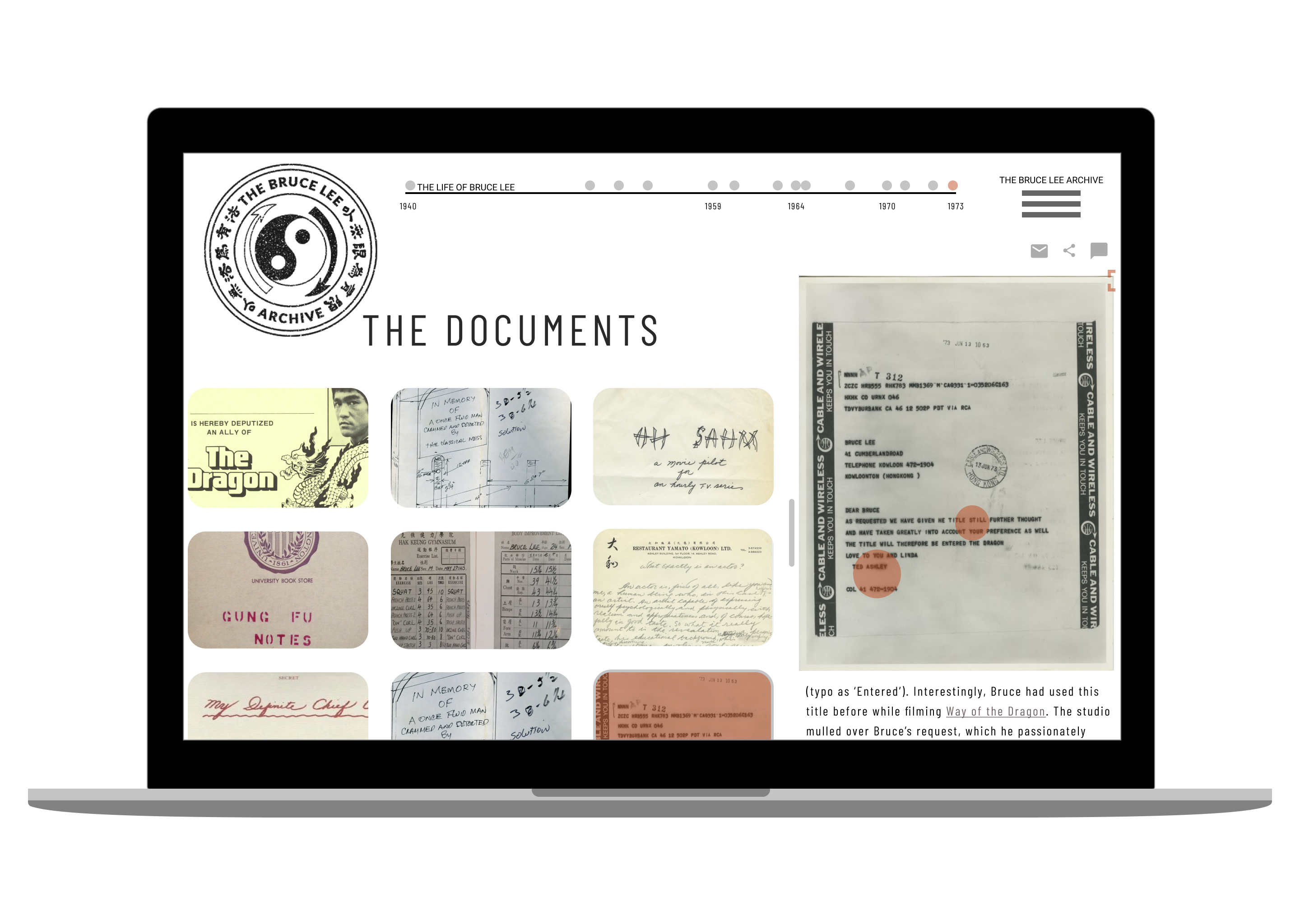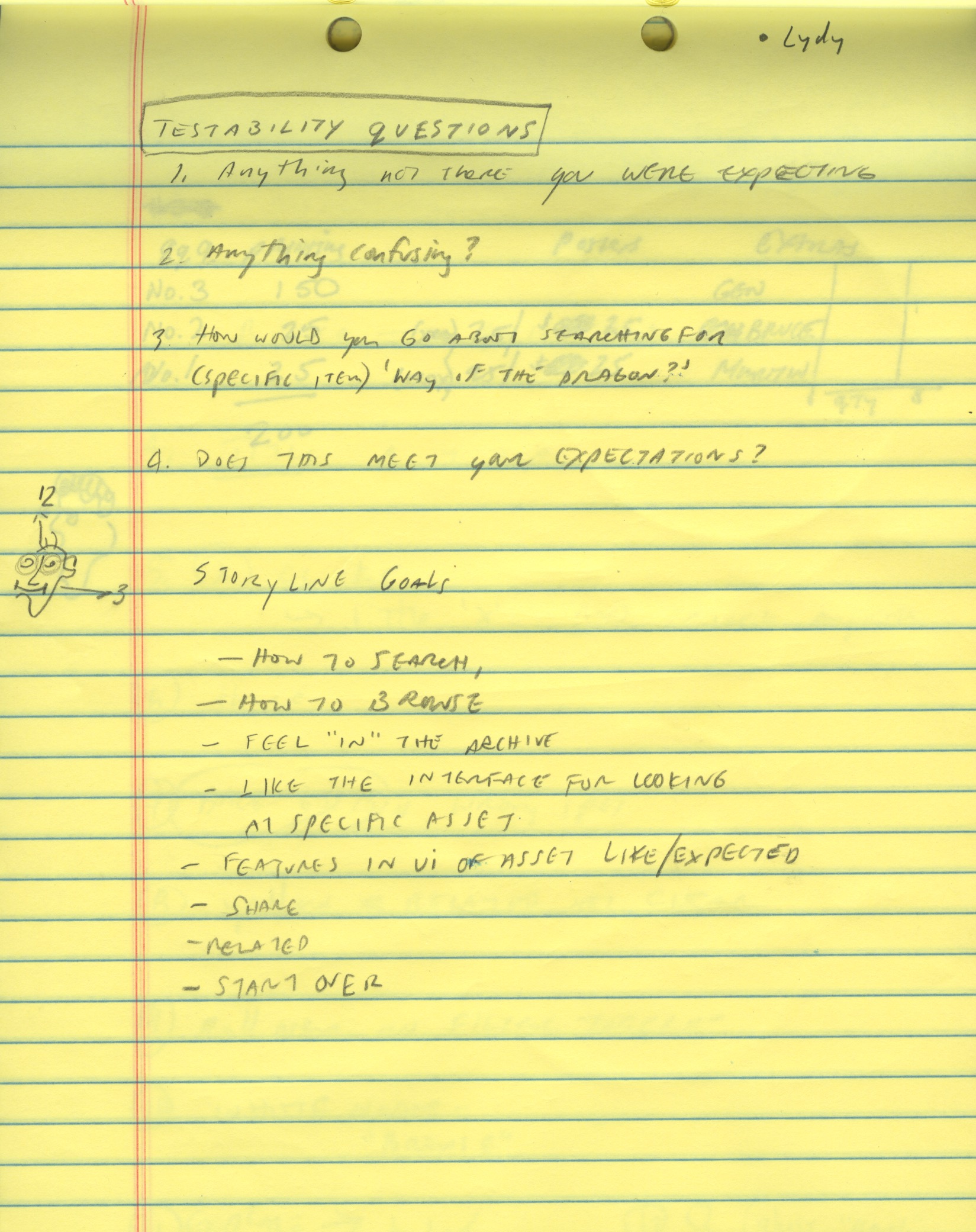The Bruce Lee Estate Archive.
Senior Product Manager
(2016-2020)
- Design and Productt management including E2E digital experience and implementation of Agile, Double Diamond framework
- Concept iteration, wireframes and user journey flows, rapid prototyping, rapid testing, hifi prototyping (desktop, mobile, wearables).
- Communication with stakeholders (cross-functional up to C-suite level)
- User Research creator; including qual and quant capture and reporting
- This tool acts as a creative resource given to licensees produce sales in the $1Ms annually on our online store, provided educational resources for exhibitions at the Hong Kong Heritage Museum, The Wing Luke Museum in Seattle, the San Francisco Historical Society, as well as for HBO, ESPN, etc., provided material for the Bruce Lee Foundation, and will be scaled for the larger community embracing Bruce Lee’s legacy and the Estate’s mission.
Bruce Lee Archive Digital Experience App
 Why The estate of Bruce Lee has over 14,000 digital assets (and triple physical assets) that it uses for social posts, licensing, museum exhibitions worldwide, and other partnerships. The estate therefore also has a vested interest in being the authoritative source on the life, work, and image of Bruce Lee. Our challenge was defined as creating a storytelling device to activate these assets based on those interests.
Why The estate of Bruce Lee has over 14,000 digital assets (and triple physical assets) that it uses for social posts, licensing, museum exhibitions worldwide, and other partnerships. The estate therefore also has a vested interest in being the authoritative source on the life, work, and image of Bruce Lee. Our challenge was defined as creating a storytelling device to activate these assets based on those interests. 



Next we conducted testing with two important groups in the top teir of the general public: (1) our already-established ‘social micro-influencers’ which were 32 high-quality users who have 2,000+ followers on their Bruce Lee-fan social pages) and (2) Thirteen high-quality licensees who routinely engage in Bruce Lee licensing deals netting profits for the Estate annually. These articulated users vetted the fun-factor, the in-the-know-fan-factor, and the is-there-a-need-factor for the public archive. From there we polished concept and designs and took the browsable feature and the ‘My Archive’ feature to UserTesting.com and conducted these as unmoderated A/B tests and concept tests.